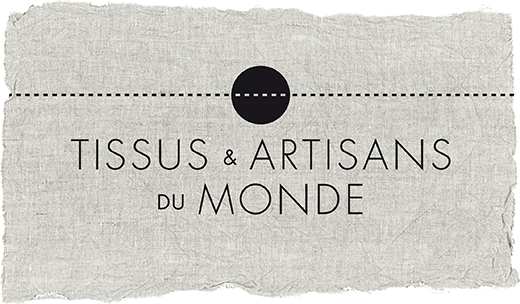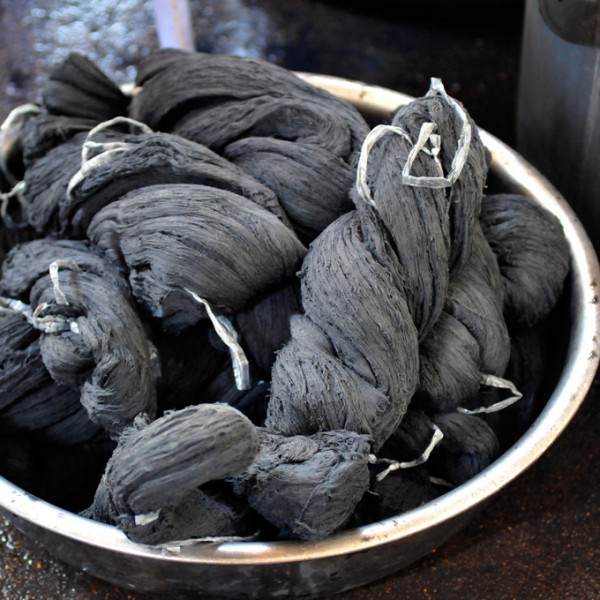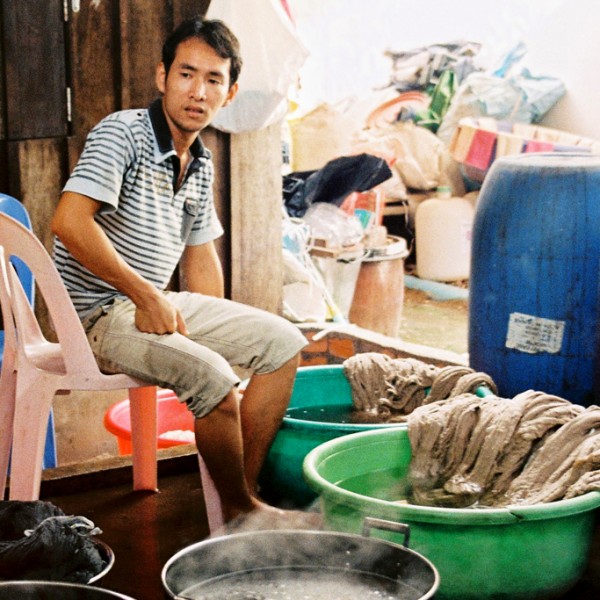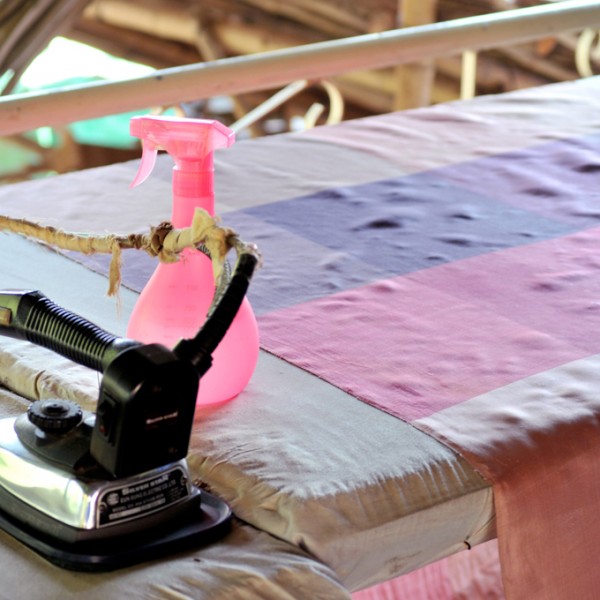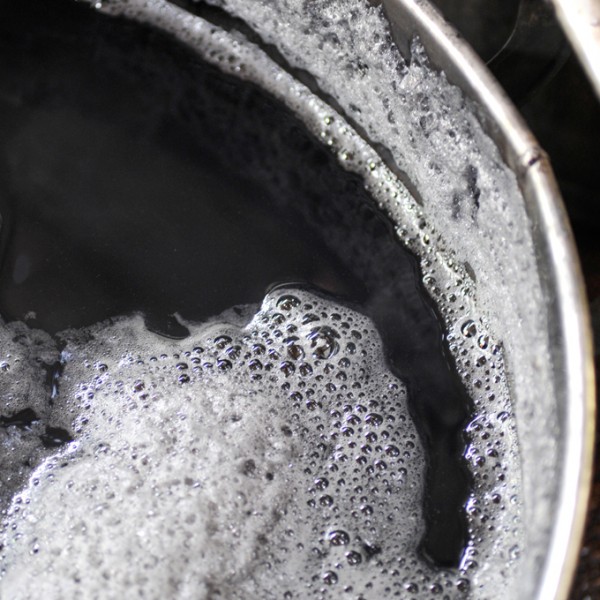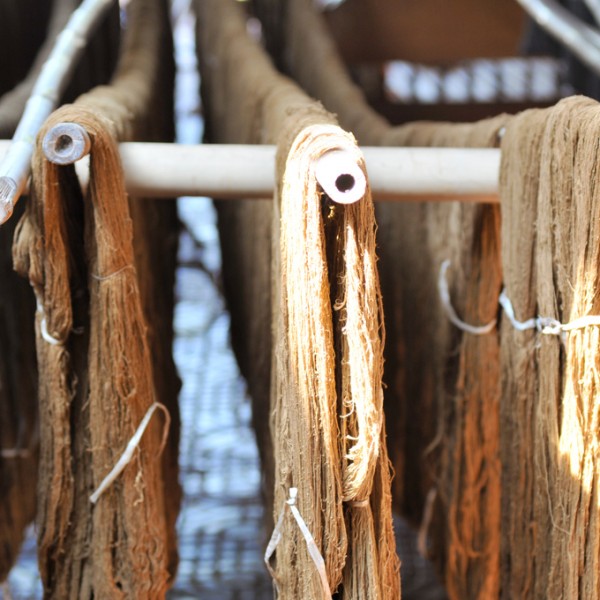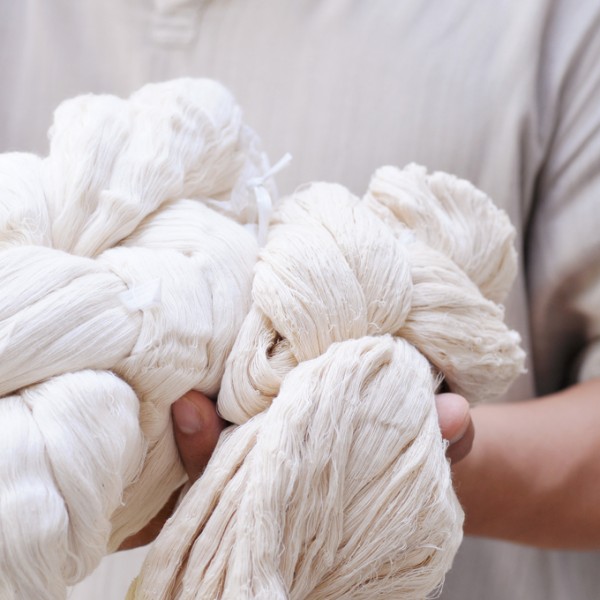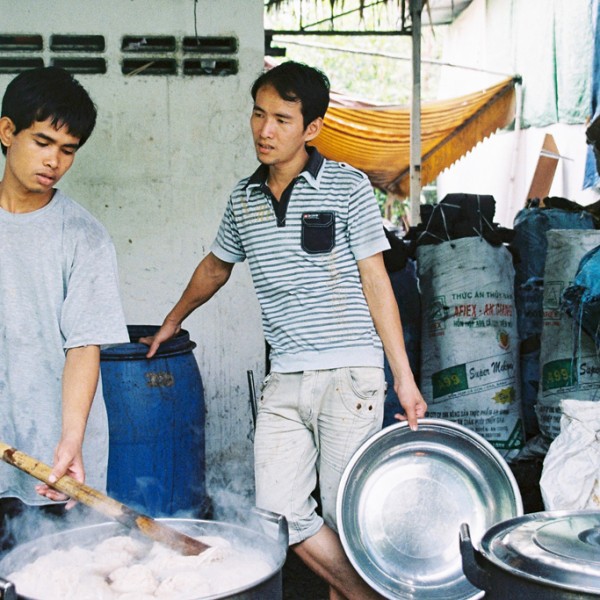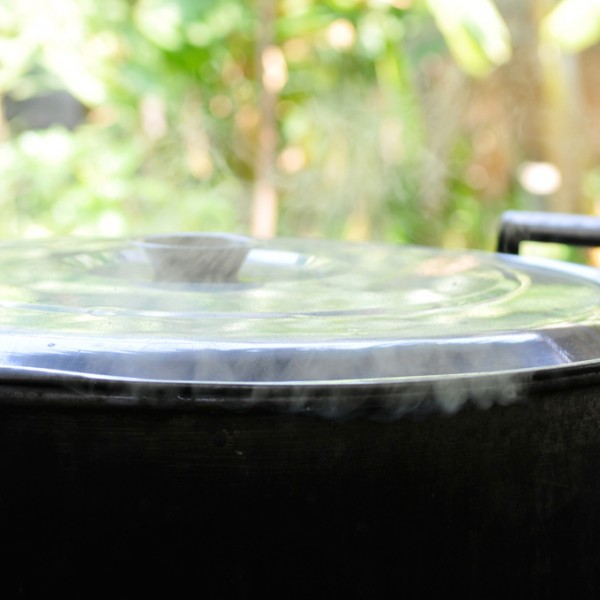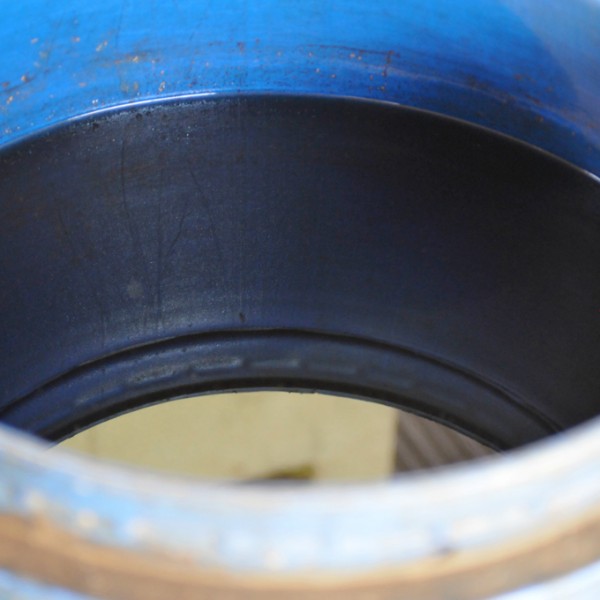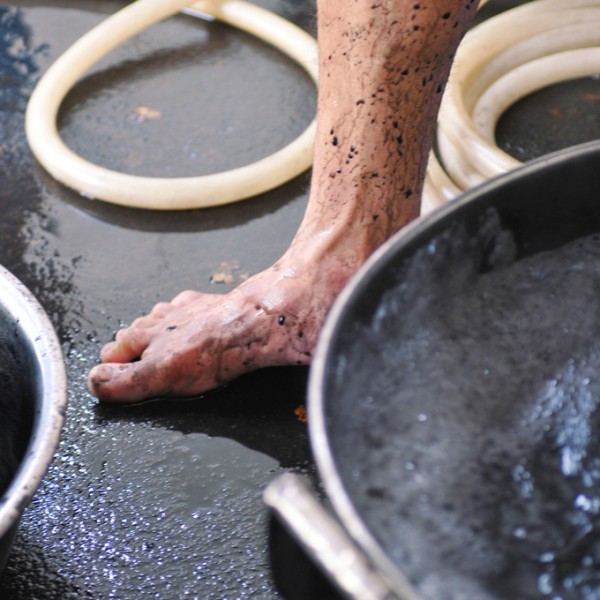Thea knows all the secrets of natural dyes. He has learned everything at Goel Community, a humanitarian NGO in Phnom Penh, set up by a Korean missionary Jung Minh Han, who develops textile collections in silk and cotton. Yarns are dyed by hand, using traditional, natural and ecological techniques at the workshop in Phnom Penh. They are then given to women in villages located in the area of Takeo to be woven. Goel Community pays all the weavers and then takes care of the distribution and sale.
Each colour is obtained from plants, leaves and tree barks. The almond tree gives a dark gray tone, the indigo tree, all shades of blue, and the garcinia (“prohout” in Khmer), a bright and saturated yellow curry colour. The dyeing capacity of the workshop in Phnom Penh goes up to one hundred scarves and twenty-five kilos of yarns per day. The colour chart covers more than a dozen different colors.
Thea is twenty-four years old. His sister has introduced him to Han after he gave up his studies. He told me he wanted to quit on the very first day of work. Taking care of the dyeing process is a physical and tough job. It is really hot and you have to constantly plunge your hands into the pigment vats, boiling water pot, clear water basins. Always on your knees, bent, squatted in order to squeeze skeins of yarn, twist, move and keep an eye on them.
To convince him to stay, Han explained him that as he would be taking care of yarn dyeing process, he would contribute to help disadvantaged people in the countryside by giving them work and a steady income. And on the next day Thea came back to the workshop and he has been then working here for the past five years.
Thea is the one in charge and he watches all the steps with great care and precision. Dyeing yarn has become now a vocation. He told me with a smile that he would have become a “gangster” if Han had not given him his chance.
